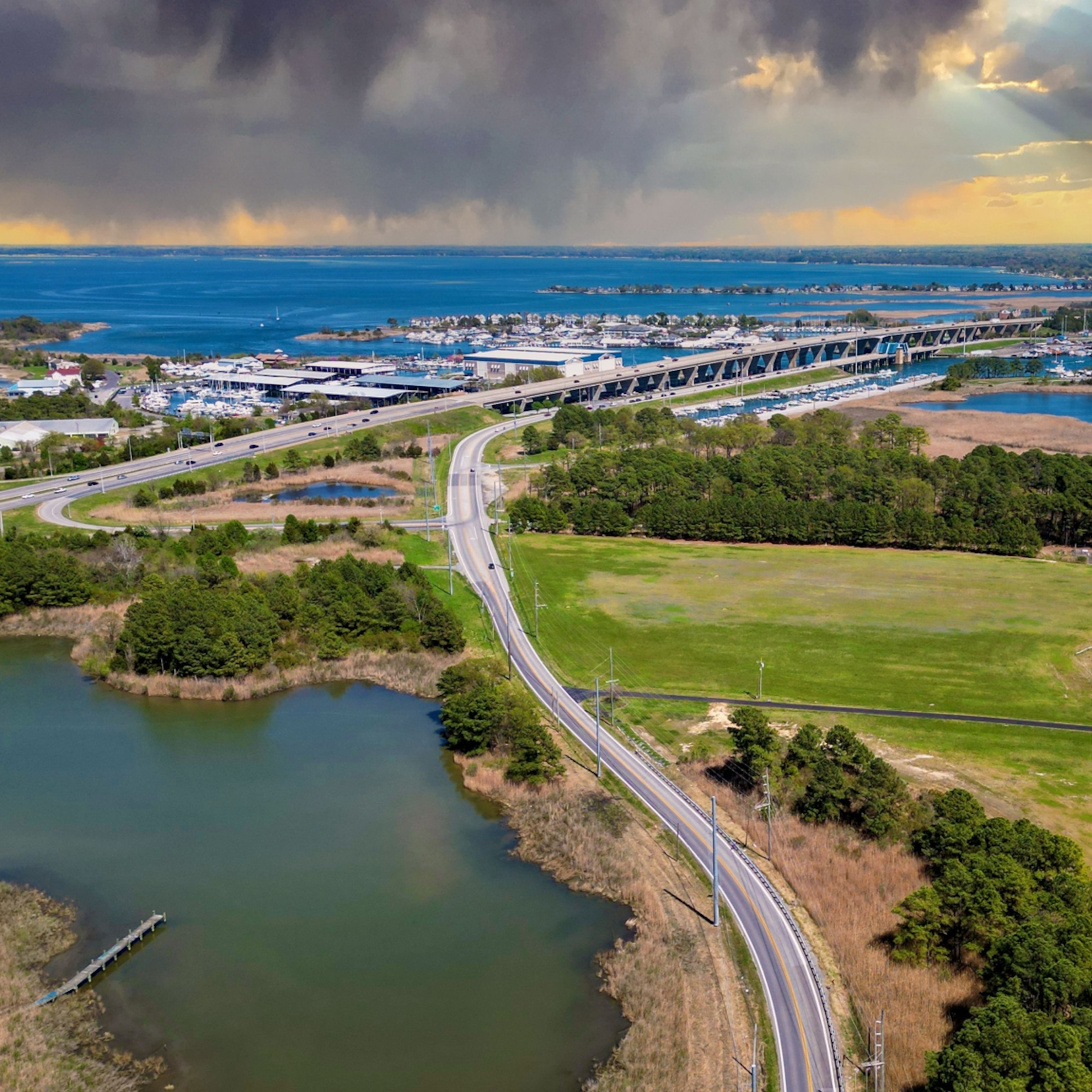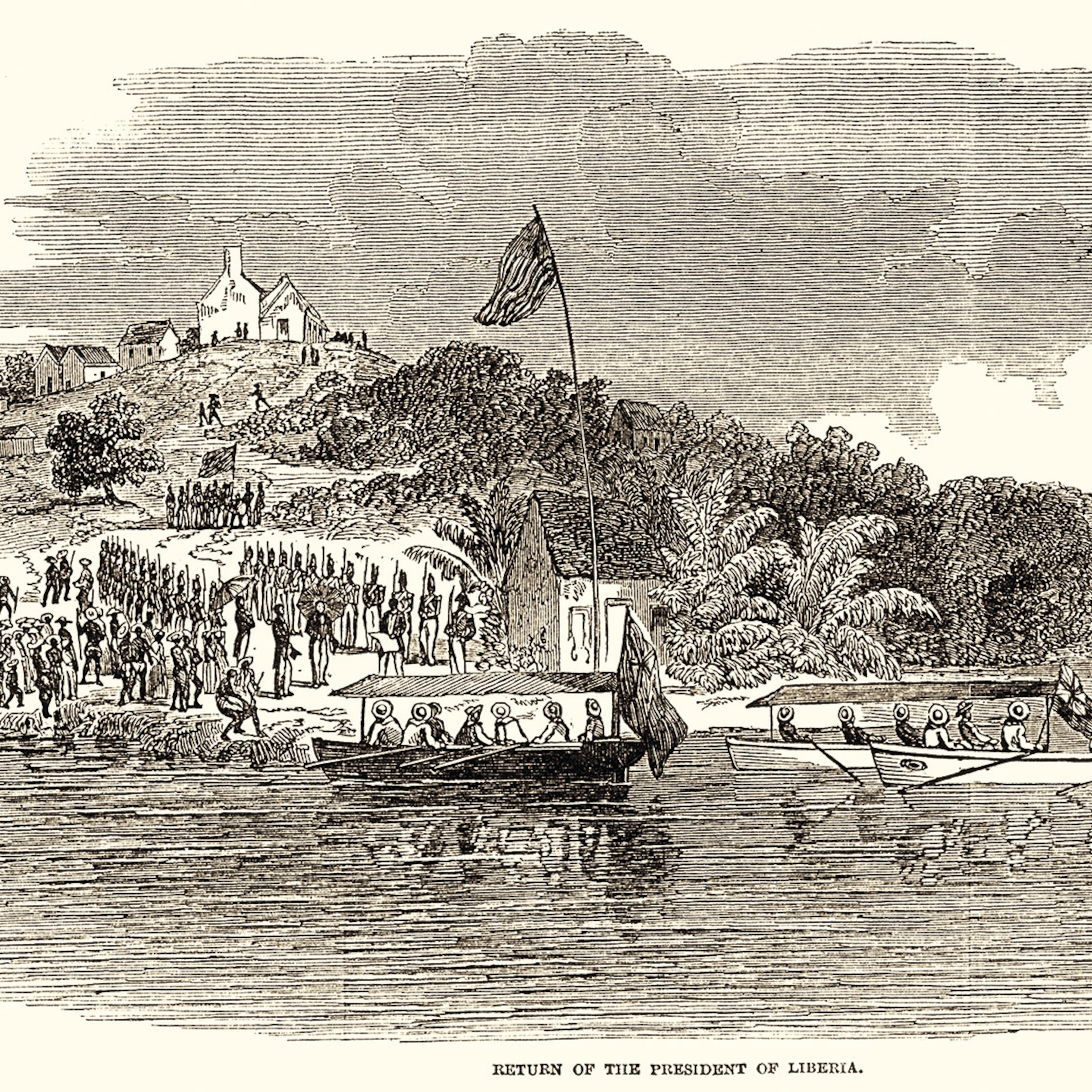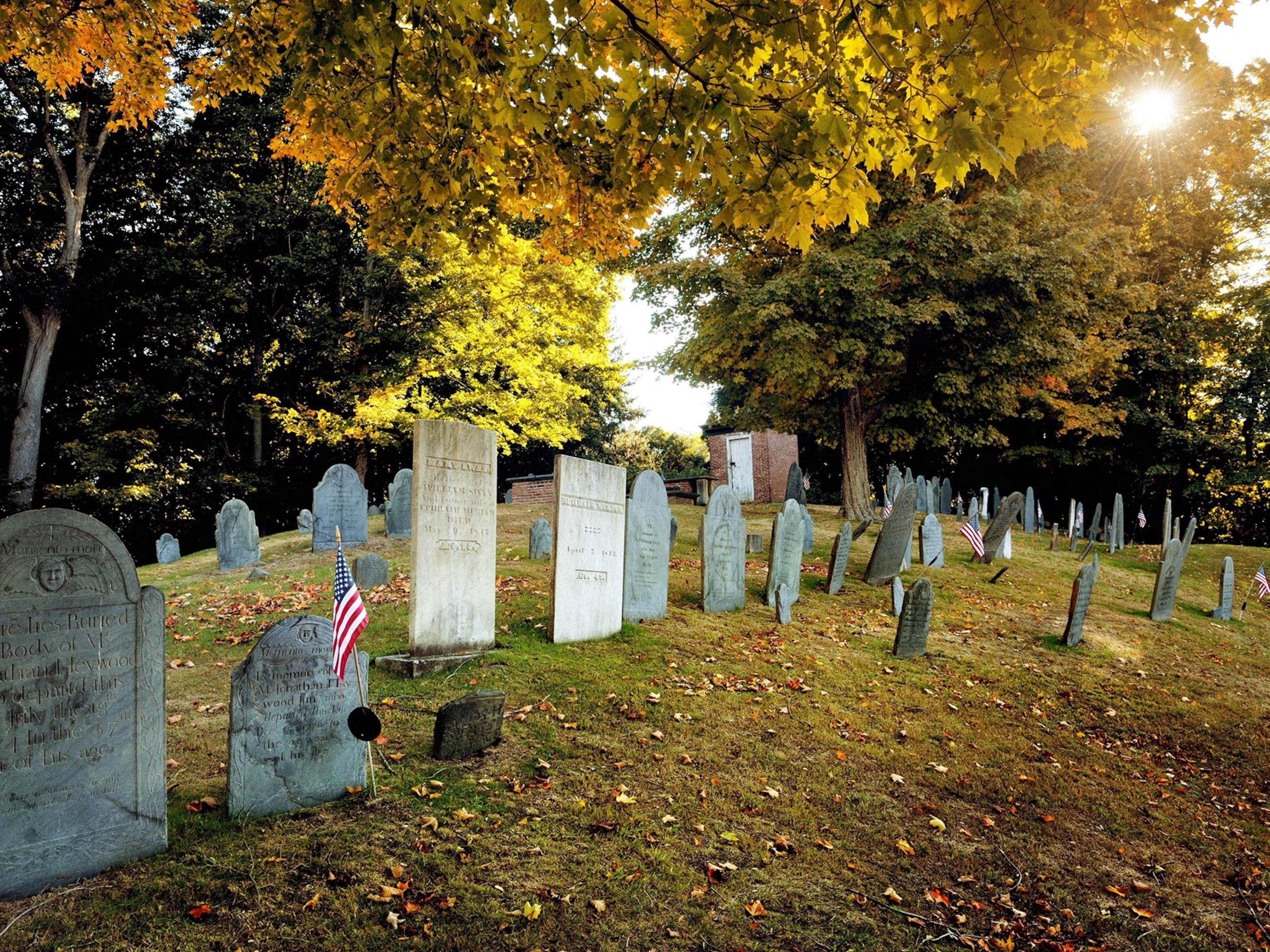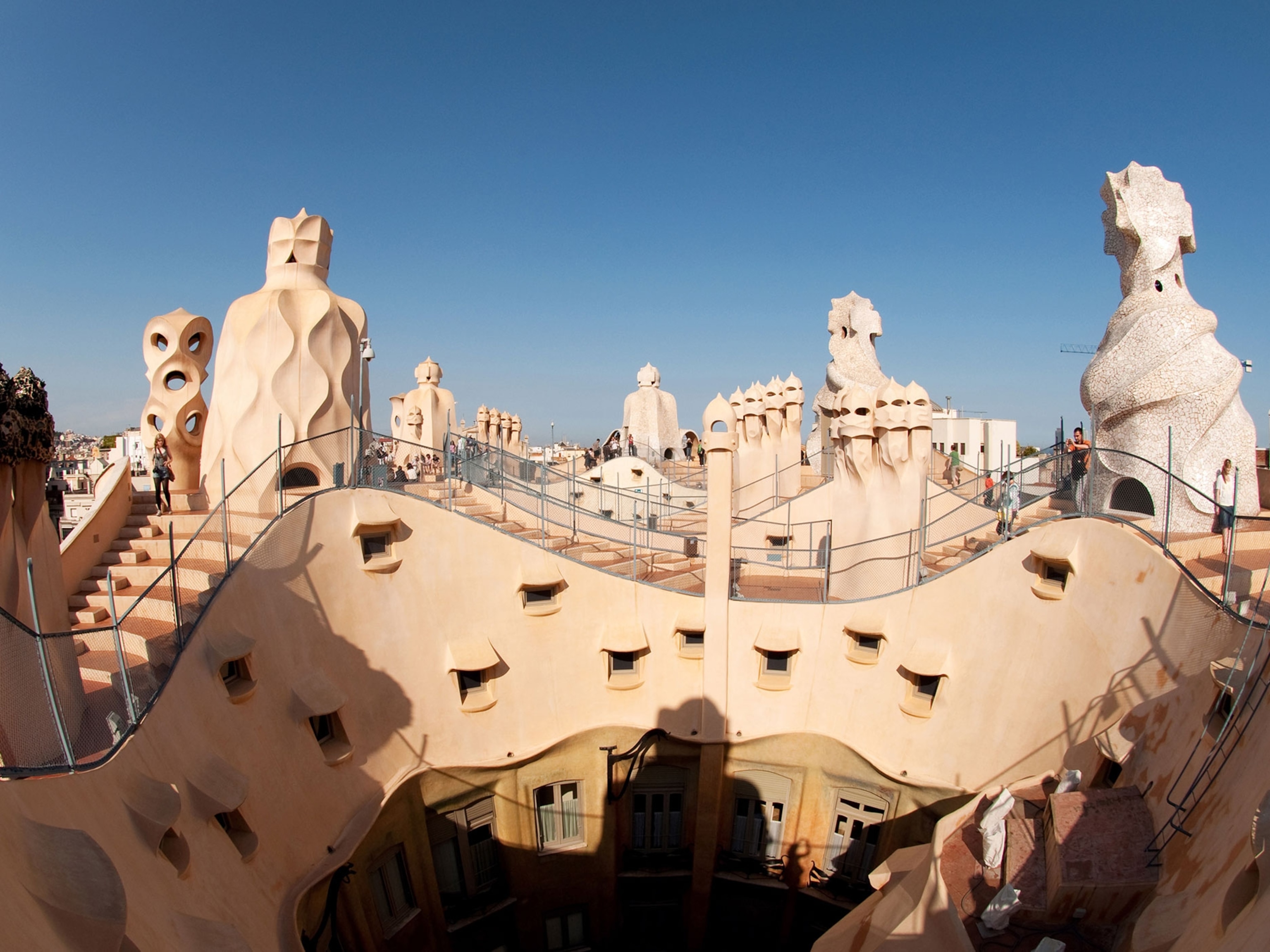
What Happens When Your Hometown Becomes a National Park?
Ste. Genevieve, Missouri, holds the key to a part of America’s forgotten past—and a headful of memories for me.
STE. GENEVIEVE, Missouri—Nobody knows how many people are buried in the old cemetery here. Estimates go as high as 5,000—more than the city’s current population. There are French traders, former slaves and their former owners, the daughter of a Native American chief, German immigrants, the victims of a Mississippi River steamboat explosion, peasants, and at least one wily politician, all crammed into a single block.
By the mid-1800s, grave diggers were sticking their shovels into what they thought was fresh earth and hitting bones. By 1881, they stopped digging altogether. Now the cemetery is a place where people gather pecans in the fall.
The same sort of thing happened with houses the traders and immigrants lived in—log cabins built in the 18th and 19th centuries. Nobody knows how many are still standing—estimates range from 40 to 90—because over the years they were made to look like any other kind of house, wrapped in weatherproof vinyl siding, topped with an extra story, fitted with plumbing and electricity, and punctured with new windows. Some people don’t realize they’re living in a 200-year-old cabin until they pull down the drywall and see the trimmed trunks of trees. “We keep getting surprised,” says local historian Robert Mueller.
It’s a surprise this is here at all. French colonies used to dot the Mississippi River, in an area the French called the Illinois Country. But natural disasters and economic progress ripped these towns down. Not Ste. Genevieve, though. It just got covered up.
Now historians say the old houses in this little city an hour south of St. Louis make up one of the largest collections of French colonial architecture in the United States. They say the field the first settlers planted around 1750 is among the oldest continuously farmed plots of land west of the Mississippi. They say that behind the drywall, buried in the cemetery, and just underneath the sleepy small town veneer, Ste. Genevieve is perhaps the last, best surviving window into an era of the American frontier that isn’t widely taught or understood.
“It’s unique not only in the United States, but in North America,” says Carl Ekberg, a historian of French colonial America. “It gives you a totally different perspective on American history. You think of the frontier. This is a different idea of the frontier.”
The National Park Service agrees. After years of lobbying from local officials, it has released a report endorsing the creation of a new national historical park here. Missouri’s senators have introduced a bill to make that happen, and many of the city’s boosters, expecting it to go through, are hoping that Ste. Genevieve’s future can be built on its past.
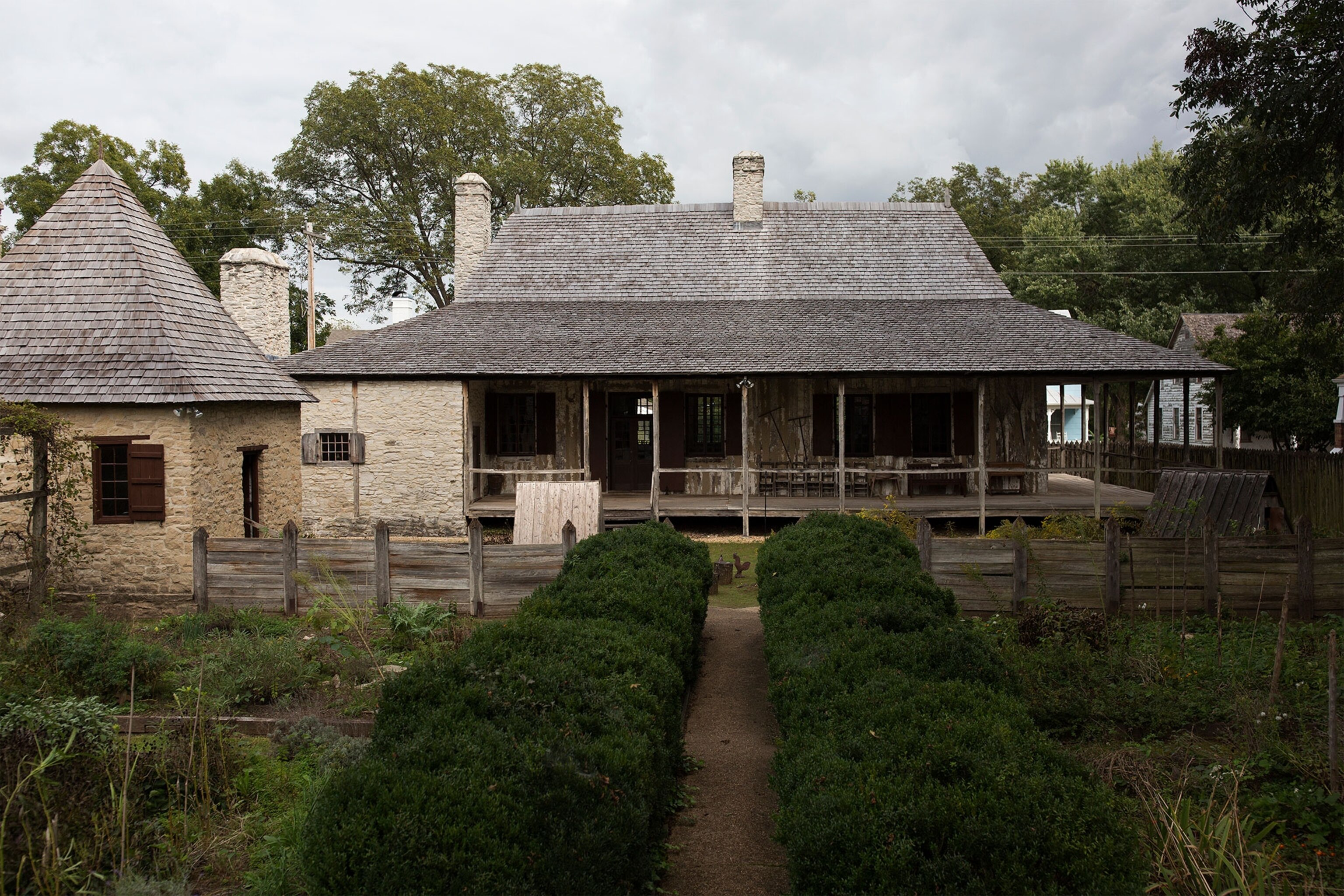
“We don’t have a lot of industry here. Like many small towns over the years, there’s been a decrease in that,” Mueller says. “We can’t wait to get an arrowhead on the highway,” he adds, suggesting that a National Park Service logo next to the town’s name on the interstate would steer tourists not only to the old houses but to the bed-and-breakfasts and wineries that have popped up, replacing factories and farms over the last 50 years.
It goes beyond business, too. “It’s going to be a chance to tell people something is happening here,” Mueller says. For years, Ste. Genevieve got occasional write-ups as a cute weekend destination in travel magazines. But the National Park Service’s 107-page report puts the town on par with Savannah, Georgia; the Gateway Arch; and the Civil War battlefields. It’s a vindication for the cozy little city with the forgotten French history and anyone connected to it. That includes me. My parents are from there.
I grew up a hundred miles away, but Ste. Genevieve was a second home to me. I picked pecans in the cemetery and rode my bike past the cabins. Back then, I didn’t know anything about the town’s history or the relatives who were buried under the pecan trees—nobody really talked about it. Ste. Genevieve was a place for Thanksgiving dinners and family memories.
When the Park Service study came out, it’d been years since I had visited Ste. Genevieve. So I went back to see what I had overlooked. I wanted to square my memories with the history, to connect the French village to the modern town, and to get a sense of what might happen when a place that’s been lived in for centuries becomes a national park. I had a sense of unease about the whole thing. I was worried that this might be my last chance to see the town as I had experienced it before it got sealed into a time capsule and crowded with tourists.
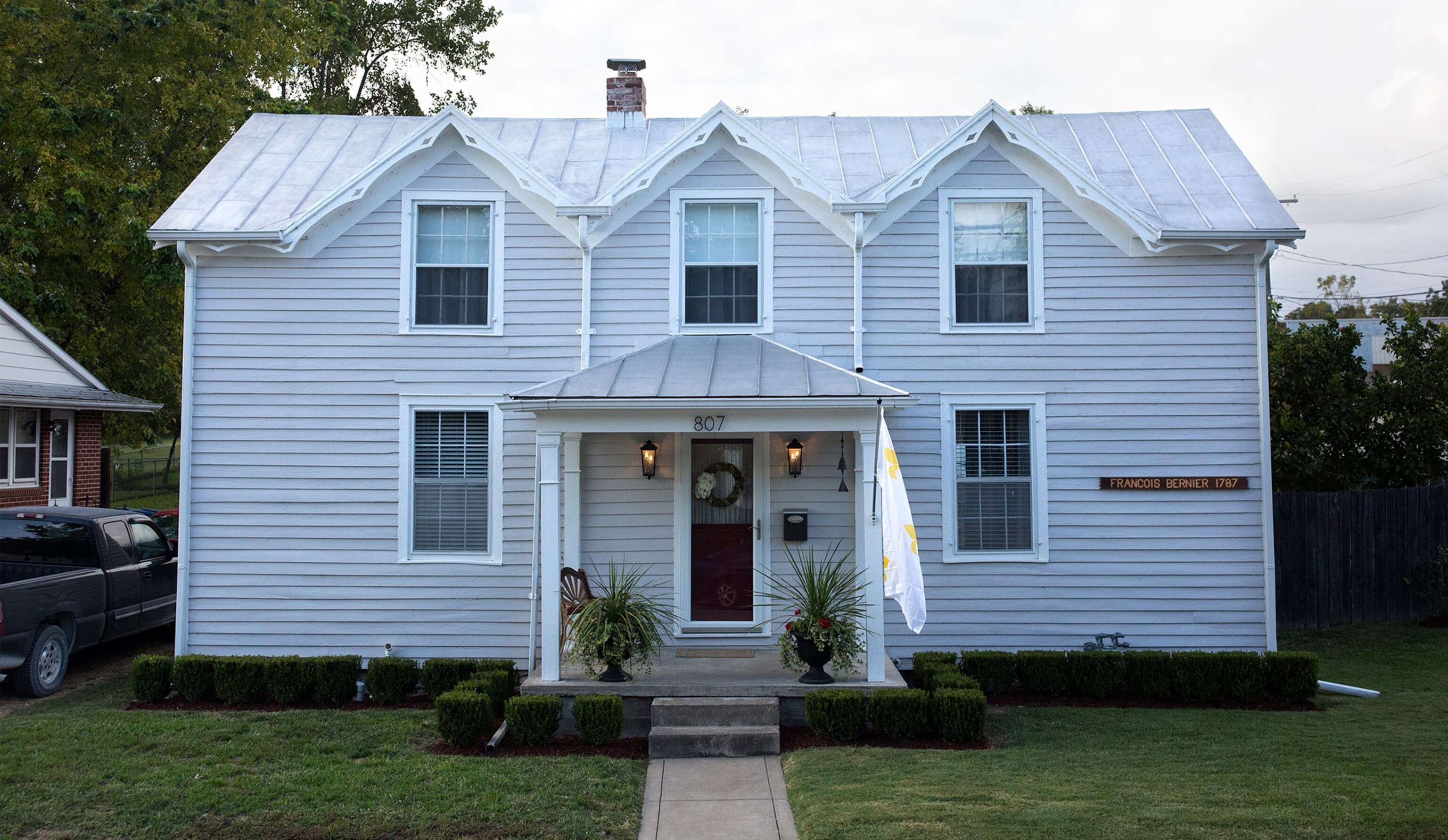
I’m not sure if my first memory of Ste. Genevieve is real, or if I saw it on a home movie and convinced myself I could recall it. It’s Christmas 1990 or so, and my family walks to the back door of my grandma’s house. The hydrangea bushes near the cellar door are wilted. I trip on a small divot in the sidewalk. Grandma answers the door and invites us all in. I have no idea the house is older than my mom, my dad, my two brothers, and me, combined.
As soon as I got to town, I drove past that house. I went by where my other grandma had lived and saw through the window that the new owners hadn’t torn down the wallpaper in the dining room. I went down Main Street. The town was quiet. I drove slowly, with the windows down, and the only sound I heard was cicadas mixing with the fading signal of the nearest public radio station. The next morning wasn’t any livelier. I walked all over downtown and didn’t see another person until I stopped by the welcome center and found a couple from Tennessee looking at models of the historic houses. We sat together and watched a short video that proudly declared Ste. Genevieve “Missouri’s oldest town.”
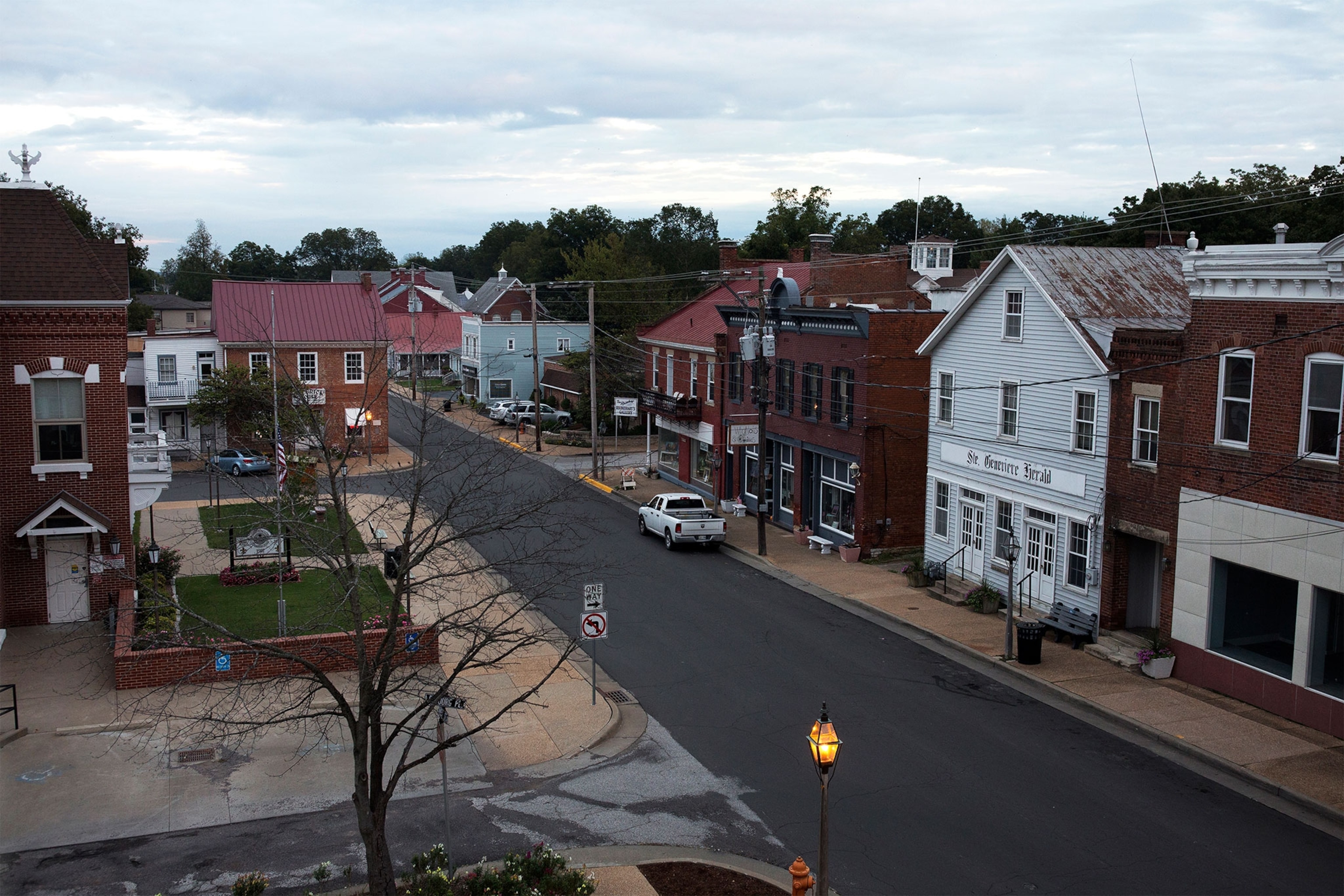
Ste. Genevieve was founded around 1750. French explorers, most of them from Canada, had traveled along the Mississippi for decades prior, and they trapped furs, mined minerals, and harvested salt in the area. Rampant flooding in the 1780s pushed the early citizens a few miles inland, to Ste. Genevieve’s present site. These townspeople were mostly farmers, and they shared a communal plot called le grand champ, or the big field, with each family raising crops on a strip of land that stretched to the river. The field was refreshed by frequent floods, and Ste. Genevieve became “a breadbasket to New Orleans,” and beyond according to Ekberg.
The French ceded this land to Spain in 1762. In 1800 it went back to the French, who sold it four years later to the United States, beginning the age of westward expansion. Ekberg points out that this means early residents of Ste. Genevieve would have lived as subjects of King Louis XV of France, King Carlos III of Spain, and Napoleon Bonaparte before becoming U.S. citizens. Despite the revolving governments, “there was little trauma,” Ekberg says. Ste. Genevieve was then, as it is now, a quiet little town.
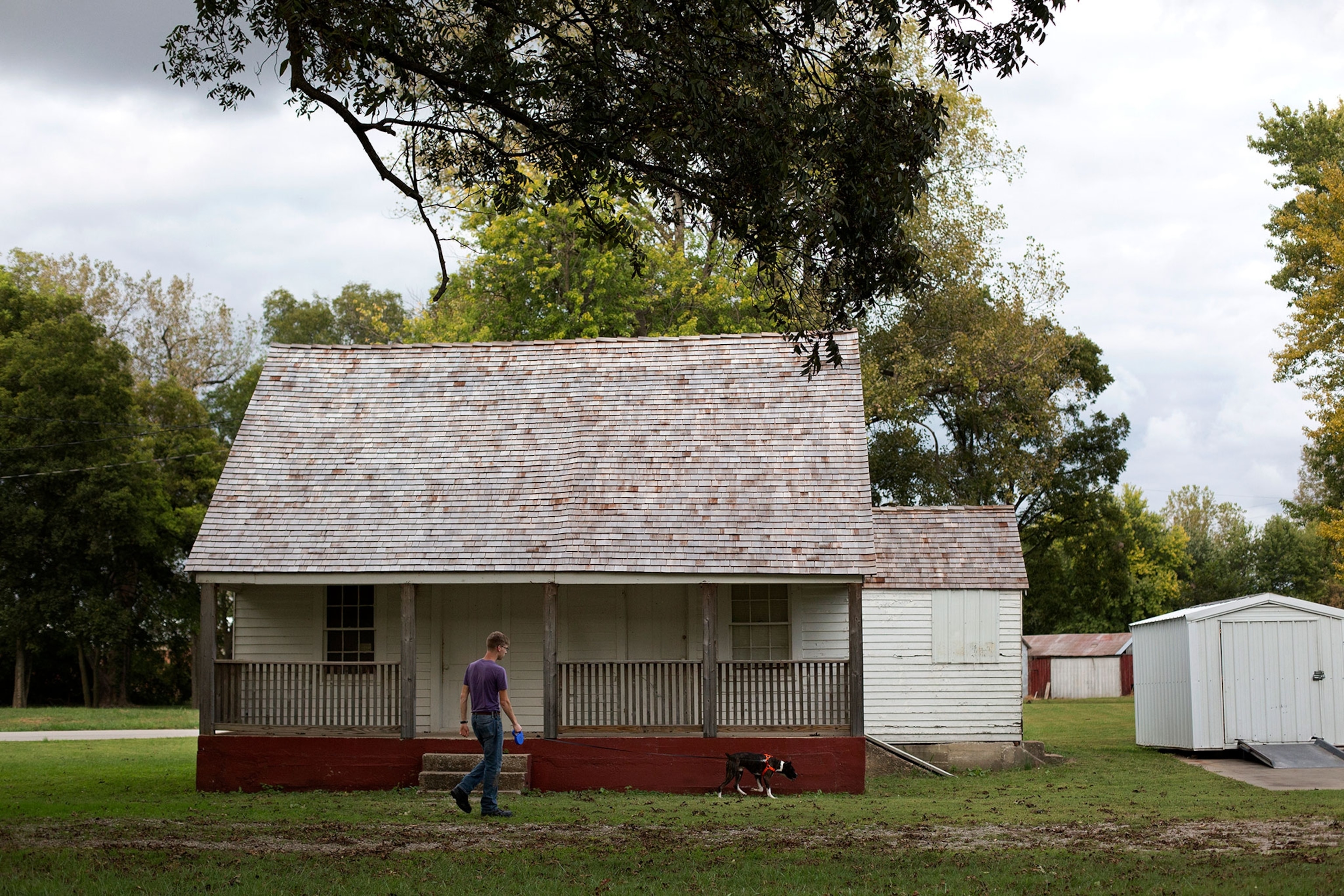
Across the street from the visitors center is the Bolduc House, a log cabin that was built in 1793. It’s been restored to its original state and opened as a museum by the National Society of the Colonial Dames of America, a preservation nonprofit that owns a few houses in Ste. Genevieve. Here, a guide in 18th-century garb showed me what makes the historic cabins special: They’re built in a vernacular style that combines techniques seen across French territory. There are Norman-style trusses in the roof that look almost like the hull of a ship turned upside down. The walls are made of logs that stand vertically from the ground or a stone foundation with a plaster-like mortar called bousillage in between, in a style also seen in the early houses of Quebec. Finally, the Ste. Genevieve cabins are wrapped with galleries, or porches, in a design flourish adapted from the Caribbean, but doubtless helpful in the stifling heat of southeastern Missouri summers.
The houses are log cabins, calling to mind an image of rusticity. But these houses “were bigger, better finished, and fancier than the houses built by subsequent generations of Americans,” says archaeologist Robert Mazrim, who has studied artifacts here.
“They’re not throwing up log cabins Dan Boone style,” Ekberg says. “These were carefully crafted houses that were built to last.”
And last they did. The cabins survived a series of severe earthquakes in 1811 and 1812 that wiped out New Madrid, Missouri, to the south. A few miles away, Kaskaskia, Illinois, which is older and much more historically significant than Ste. Genevieve (it was a French government center, the first capital of Illinois, and the site of battles in the American Revolution), was washed away by a flood. When German immigrants moved to the Midwest in the 1830s and ’40s, it changed the character of Ste. Genevieve, but not its fortunes. More immigrants went to St. Louis, which became the premier river town north of New Orleans. “In the 1850s, St. Louis is booming,” Ekberg says. This boom leveled the historic cabins along St. Louis’s waterfront, replacing them with warehouses and, a century later, the Gateway Arch. “Ste. Genevieve becomes a backwater,” Ekberg says, “and not a very wealthy backwater.”
Ste. Genevieve saw some growth in its mining industry—one of its products, a type of pinkish limestone called Ste. Genevieve marble, was used in public buildings across the country—and a gothic church was dedicated in 1880. Other than that, the city stayed quiet, working class, and overlooked. A national park designation might change that.
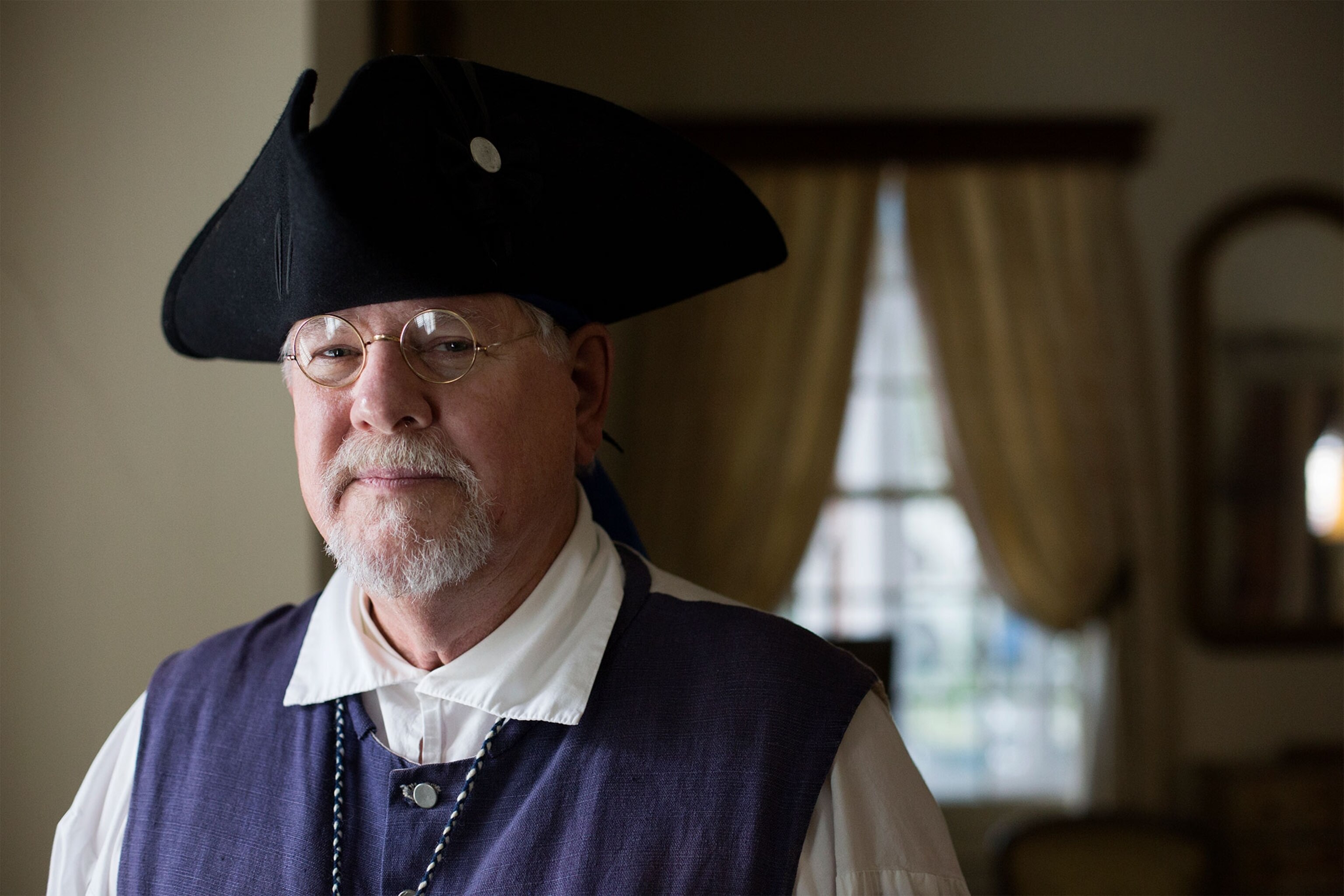
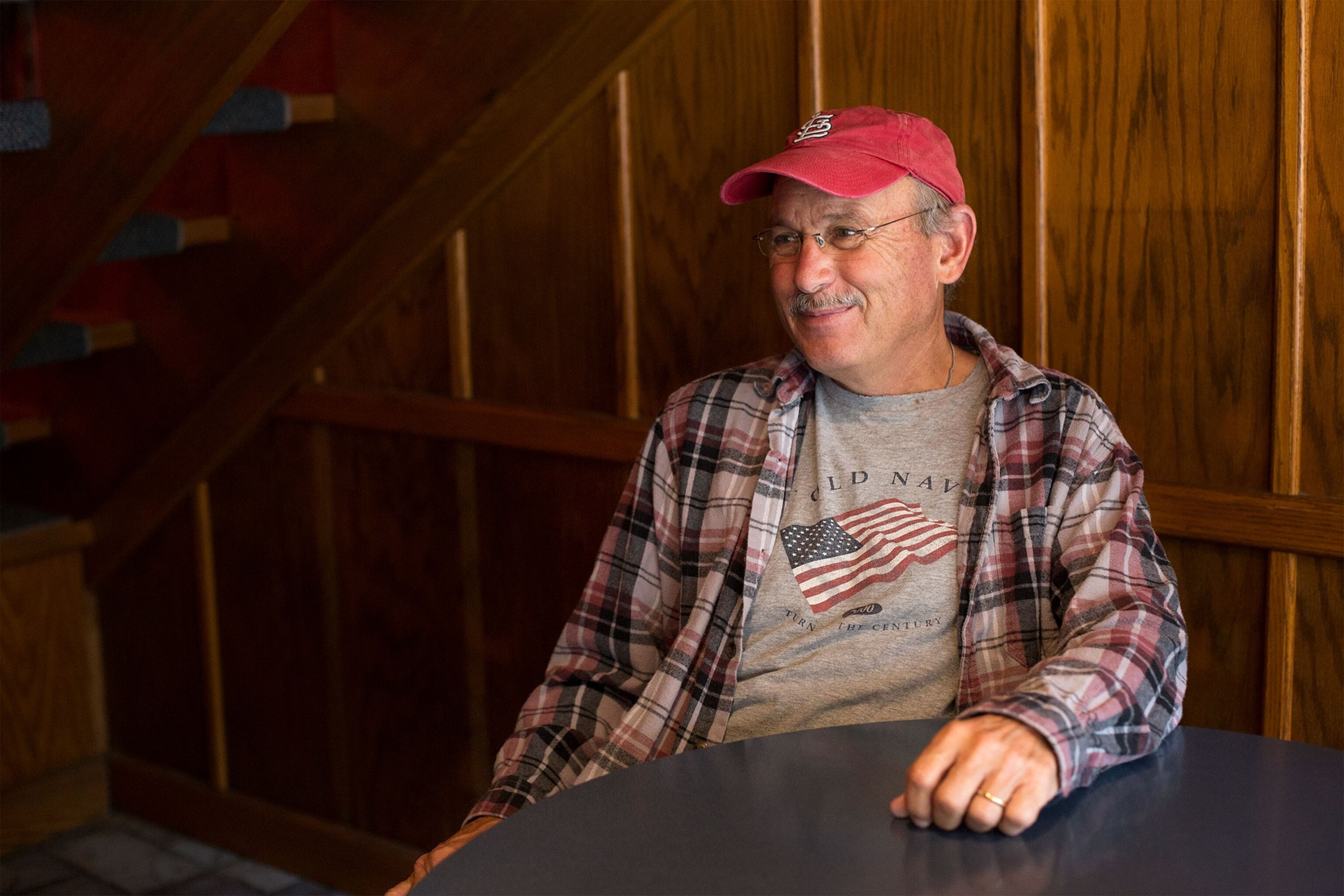
The federal government has shown interest in Ste. Genevieve’s colonial history before. In 1960, a swath of the town was declared a national historic landmark, which helped preserve the houses and left them in the hands of individuals, private organizations, and city and state governments. After the Great Flood of 1993, the feds saw the need to protect the houses and reduced the town’s share of the bill for a new levee. The park proposal goes beyond the landmark designation and allows the Park Service to buy or accept as a donation any land in the historical district that becomes available.
The city welcomes this. “We would look forward to the increased attention and awareness,” says Sandra Cabot, the tourism director of Ste. Genevieve. The city has about 400 tourism-related jobs, making it a sizeable local industry already. (By comparison, the county hosts 670 agriculture jobs and 1,800 manufacturing jobs.)
Studies show even small national parks can stimulate local economies to the tune of hundreds of thousands of dollars, which Mayor Richard Greminger says could be spent on new roads and sidewalks. “I think everybody agrees it can only mean good things,” he says.
The prospect of federal control over local land typically meets some level of resistance with locals, no matter where it happens. But there have been minimal public comments in opposition to a park in Ste. Genevieve. The study itself mentions only one.
“That made an impact on the study team,” says Tim Good, the superintendent of the Ulysses S. Grant National Historic Site in St. Louis, who assisted with the Ste. Genevieve study. “The comments were so overwhelmingly in favor.” When I looked on the “What’s Happening in Ste. Genevieve” Facebook page, I saw only one skeptical comment.
Even the Society of Colonial Dames, which would essentially compete with the Park Service in offering tours of historic homes, welcomes a national park declaration. The society has purchased a few more cabins and a more modern bank that it plans to turn into a visitors center. The site manager told me he’s ready to work with the Park Service, which can help with everything from historical interpretation to publicity, and would likely double the number of tourists, currently about 20,000 a year.
“That's what this town needs,” says Shannon McBride, who runs Café Rust on Main Street. “More people here during the week. More people strolling in and walking.”
“We need to join the rest of the world,” shouts a colleague from the back of the shop in support of a park.
And the town is changing, even without the park declaration. McBride’s shop is a sign of it.
When I ordered a cup of coffee at Rust, McBride presented me with a list of options, all single-origin beans, ground upon request for a cup brewed individually to precise standards. It’s fancier than my coffee shop in Washington. When I sat down to drink it, I realized some of the café chairs had come from the auction that was held at my grandma’s house after she died.
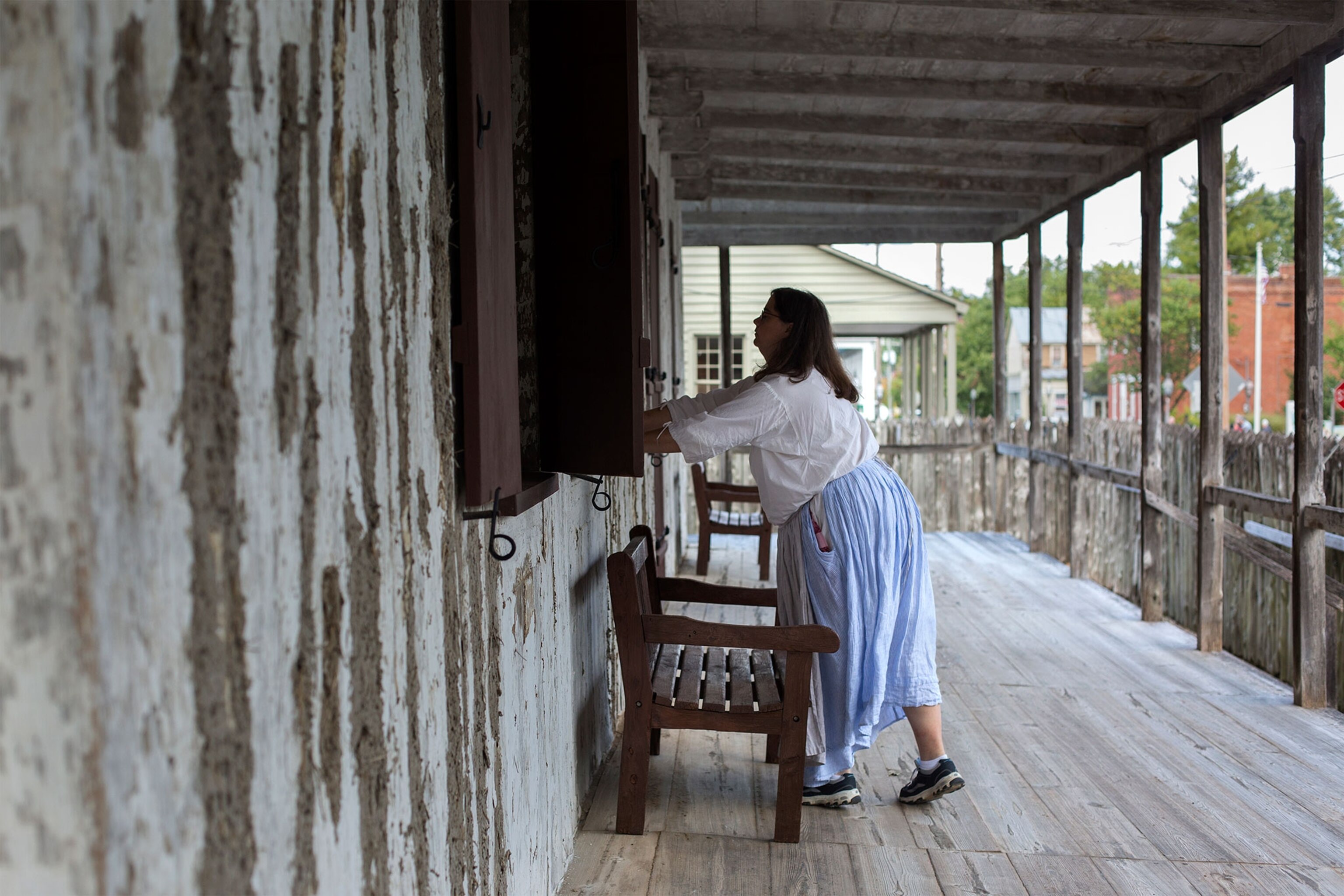
If I wanted to find someone who was nervous about the park, I didn’t need to look far. After two nights in town, I couldn’t shake the strange feeling that wider interest in Ste. Genevieve would diminish my connection to the town. The town was like the bands I listened to in college—once others found them, even if the music was the same, it just didn’t feel as special to listen.
And there is one place where the Park Service would take over my connection to Ste. Genevieve: the Bequette-Ribault House. It was built in 1808 by Jean-Baptiste Bequette, an ancestor on my mother’s side. The house would likely become part of a national park, but the building itself would remain property of its current owner, Hank Johnson. When I called him to ask about his intentions with the house, he said that, like the Colonial Dames, he’s happy to work with the Park Service. He cites the Aviation Heritage Park in Dayton, Ohio, as an example of a park where private, local, and federal operators all work together.
Johnson is a businessman who also operates a winery and hotel outside of town, and he’s invested in a new farm-to-table restaurant downtown. When I asked if Bequette-Ribault was another business opportunity, he said no, it was love.
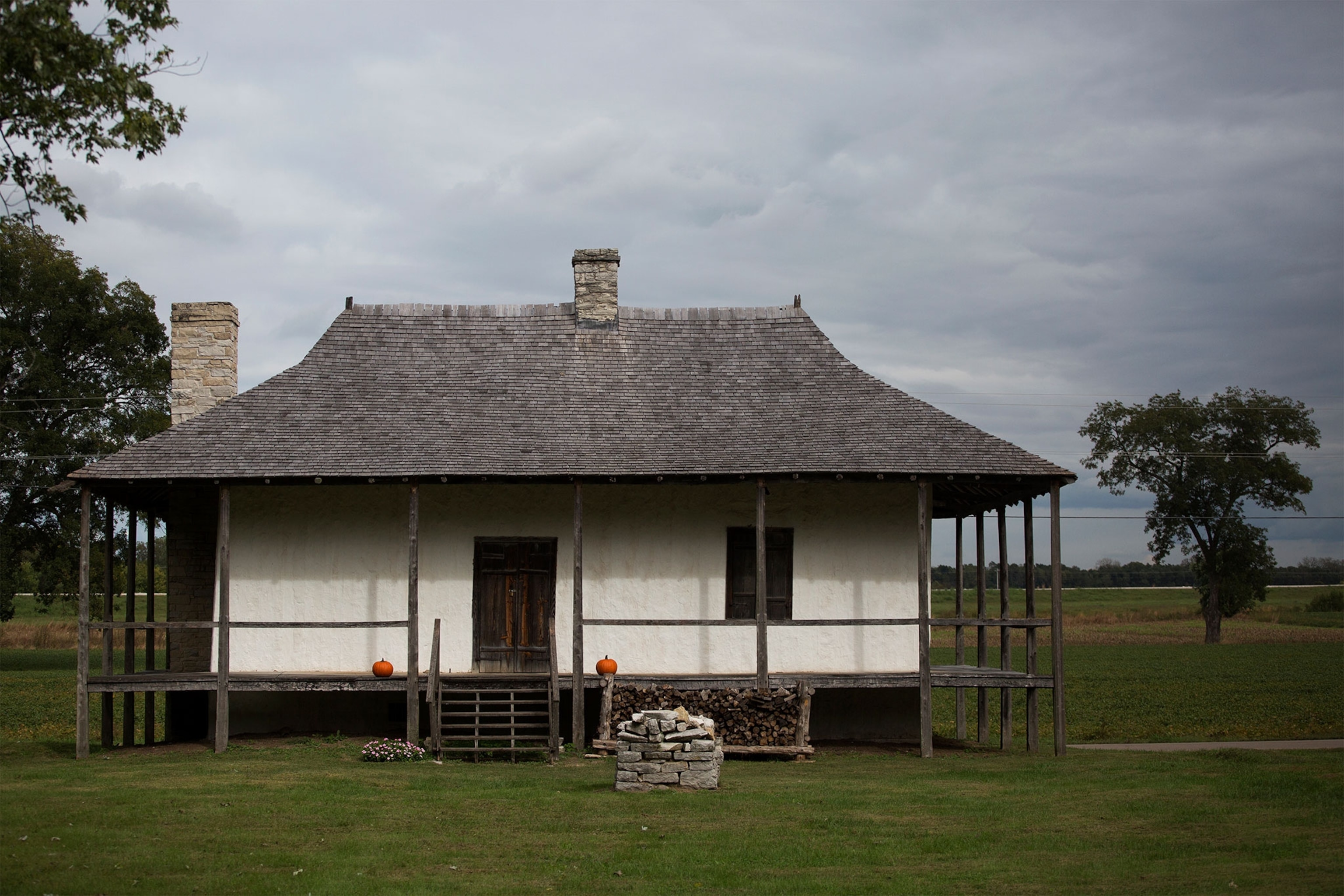
“It is, to me, quintessential French vernacular architecture,” Johnson said. He’d admired the house for nearly 30 years, ever since he first bought land nearby for a weekend retreat. As the retreat turned into a wine resort, the Bequette-Ribault House sat unused. Three years ago, when it went up for sale, he bought it and immediately started restoration. When I told him the house was built for my ancestor, he paused and shouted, “You’re in the club now!”
But I didn’t feel like a member of any club when I visited the house. I knew only vaguely that I was related to Bequette. I didn’t even know his first name until a year or so ago. Johnson’s renovations to the house were evident—plaster on the outside was pristine white, the roof and porch a dark contrast. In the outbuilding, he had a time line of the house’s history, situated across from a counter where visitors can taste his vineyard’s wines. It was business, sure, but he’d taken a lot of interest in a family he’s connected to only through a deed.
The time line detailed a history of the house and town I never knew. In 1840, four years after Bequette’s son died, the house was sold on the church steps for $405. Two months later, the buyer sold it for the same amount to Clarisse Ribault, a former slave and the mother of two children with a white Frenchman, Jean Ribault. The nature of their relationship isn’t documented beyond Ribault’s name on his children’s baptism records, but beginning with Clarisse, the Ribaults became a prominent family in Ste. Genevieve. “She thrived and became a substantial landowner,” Ekberg says. When a race riot in the 1930s forced other black families from Ste. Genevieve, the Ribaults stayed. The family stayed until the last descendant, Cap Ribault, died in the house in 1969. Later, I asked my relatives about it. They remembered the Ribaults as one of the only black families in town in the 1960s, but also as one of the more respected families. This doesn’t make Ste. Genevieve a bastion of modern race relations, but it’s an unconventional racial history that people will learn about if they visit the Bequette-Ribault House as part of a national park.
In addition to the time line and freedom papers on the walls at Bequette-Ribault, the Colonial Dames have put up an exhibit on African-American life in Ste. Genevieve, and shop owner Emilia Grass-Whittaker has purchased the first black school in town and plans to turn it into a museum chronicling the contributions of nonwhite residents.
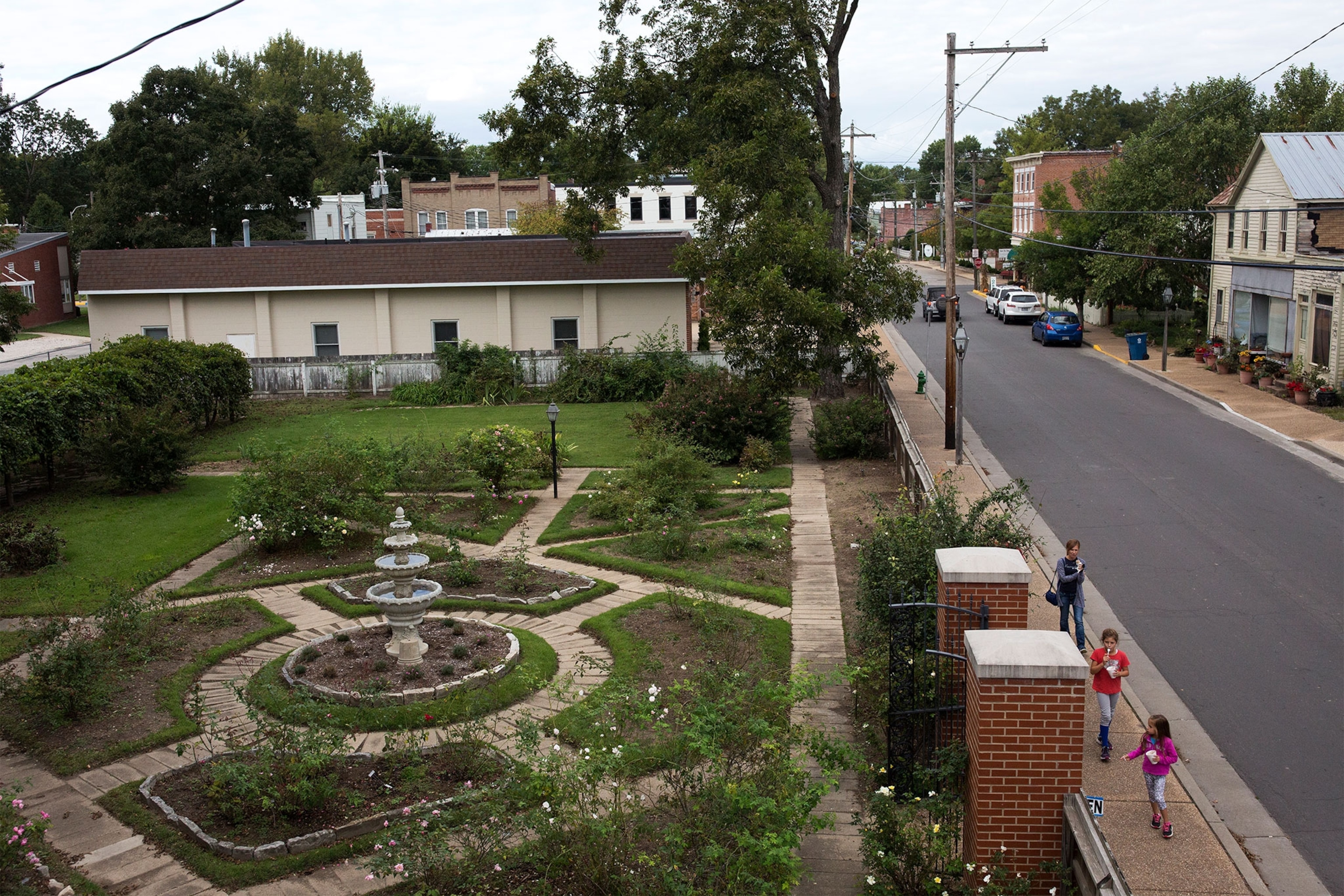
On a tour through the town, Robert Mueller told me more about Clarisse and Cap and the Ribaults. He also pointed out other historic homes, including the house where Moses Austin lived before he and his family—son Stephen F. Austin among them—departed to settle Texas. Mueller told some of his own stories, too, about growing up in Ste. Genevieve and ringing the bells in the big church. And I told him a few of the family stories I remembered.
The Austin house and the church won’t be in the park just yet, but the fact that they could one day made me a little anxious. Several people have compared Ste. Genevieve to Williamsburg, the Virginia town that’s a sort of colonial reenactment theme park. And fresh in my mind was a recent vacation visit to a medieval village in France that was beautifully preserved, but empty of residents. I mentioned my worry to Mueller, that Ste. Genevieve might be put in a bubble. If the Park Service decides the town’s history only matters until 1860, then maybe there won’t be room for my grandma’s craftsman-style house or my great uncle’s farm.
“We don’t want to be like Williamsburg,” Mueller said, explaining that the newer additions only add to the charm. “It’s quaint, but it’s not man-made quaint.”
Mazrim, the archaeologist, says turning all of Ste. Genevieve into a museum isn’t in anyone’s best interests—people need to stay in the cabins for the good of the houses and the good of the town. “When preservation gets to a point where people aren’t there at night, it’s a different thing,” he says. “You drive through at night and people are living in these houses. They’re still in there watching TV.”
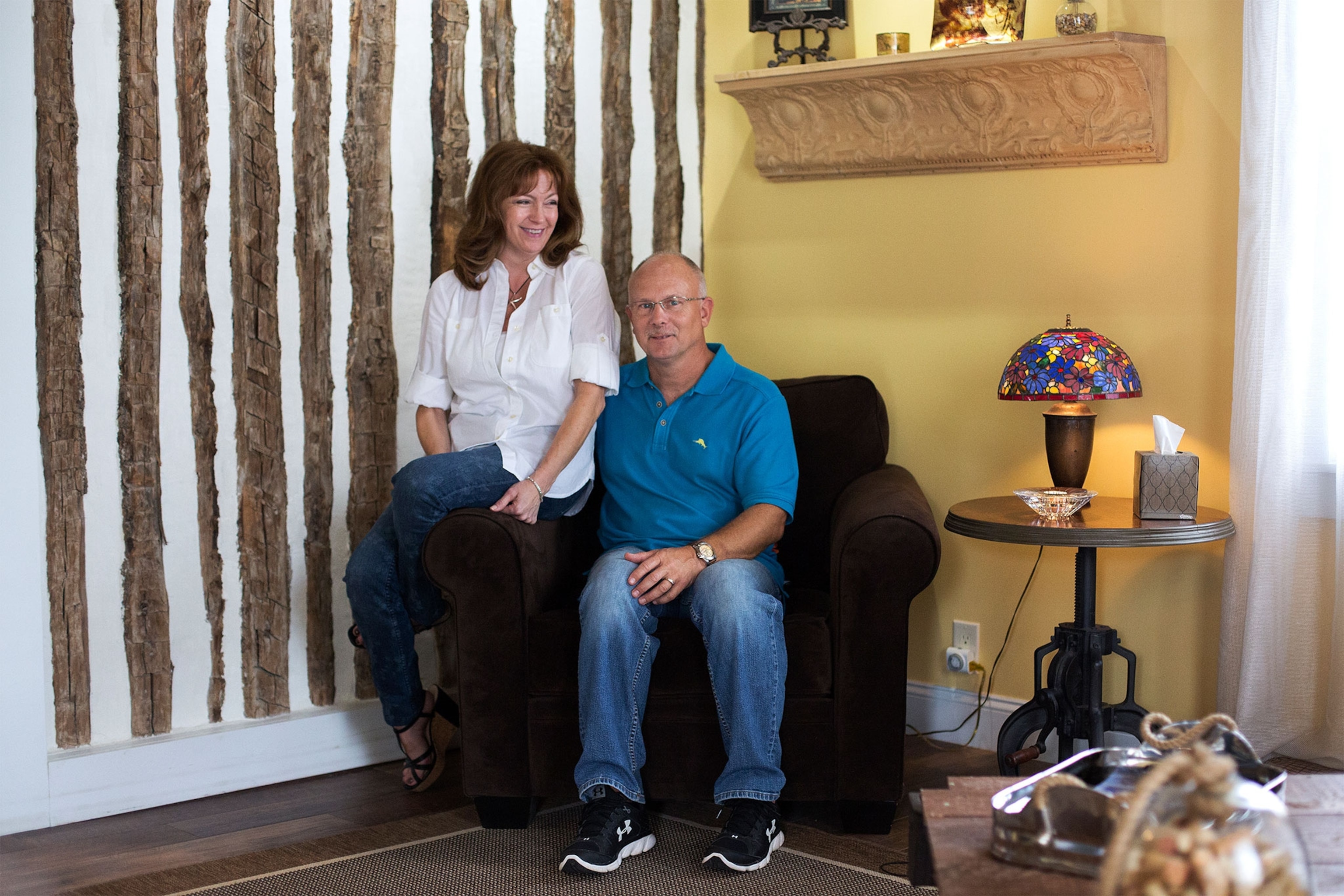
Before I left Ste. Genevieve, I had to see the site of my first memory of the town: my paternal grandmother’s house.
The house was built sometime in the early 1800s for a French-Canadian named Francois Bernier. My grandmother bought it over a century later. Now Lauren and Ed Moore live there, and they’ve spent the last few years renovating it. Apart from the basic shape of the rooms, I didn’t recognize anything inside of the house. My grandma’s aluminum cabinets and linoleum tile were gone. The pullout sofa was missing. The kitchen didn’t smell like chocolate chip cookies. The Moores have modernized and made it their own—they even exposed some of the vertical logs inside, showing that this house, unlike many others left, was built to be two stories tall, a remarkable feat considering it required dozens of logs over 14 feet long.
The Moores are now selling the house. Lauren Moore says she wouldn’t want to see it as a museum. “As far back as you can go, this has been a house,” she says. “If someone wanted to come in and turn it into the Bequette-Ribault, they could. They could take all this out and make it just like it was in 1809. But it's only standing here because of what Ed did in 2013 and 2014 and 2015.”
The Moores have done on a larger scale what people in Ste. Genevieve have done for 250 years. They’ve lived in the houses, made them their own, and preserved the history. The house isn’t a museum; it’s a home. It’s not a home I recognized, but I don’t think Francois Bernier would’ve recognized my grandma’s tiling, either.
On their coffee table, the Moores had a big stack of the National Park Service reports on Ste. Genevieve. I’d seen them all over town, too. It was a government report turned pleasure read. It was a hefty document telling the world the land is just as special as everyone here always felt it was.
As I was getting ready to leave town, the Moores asked if I wanted to see the backyard. Apart from a fence and a few landscaping changes, it was the same as I remembered, including a tree that was planted the year I was born. The divot in the sidewalk I’d tripped on 26 years ago was still there, too. It was right next to the hydrangeas, now in bloom.


